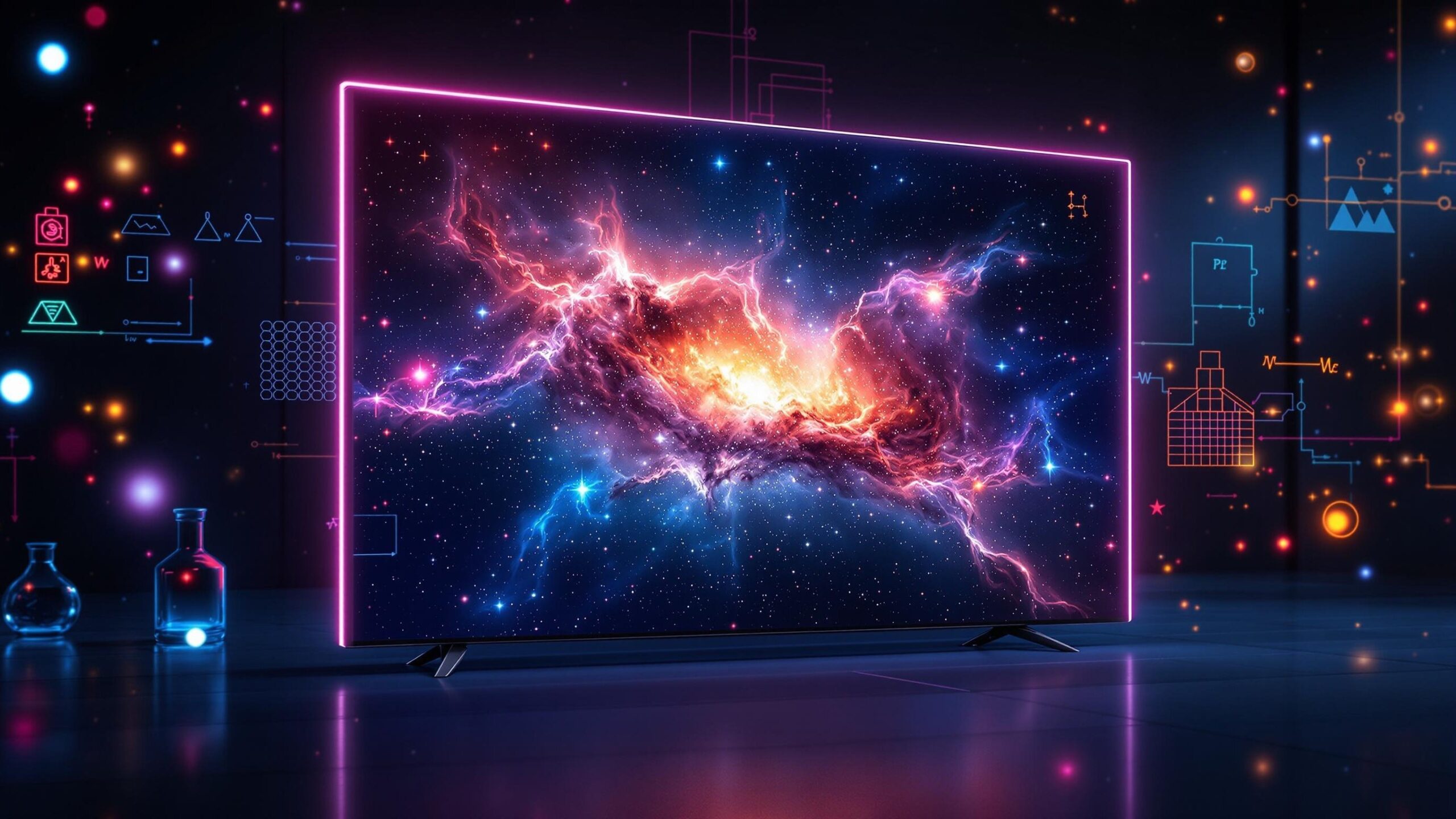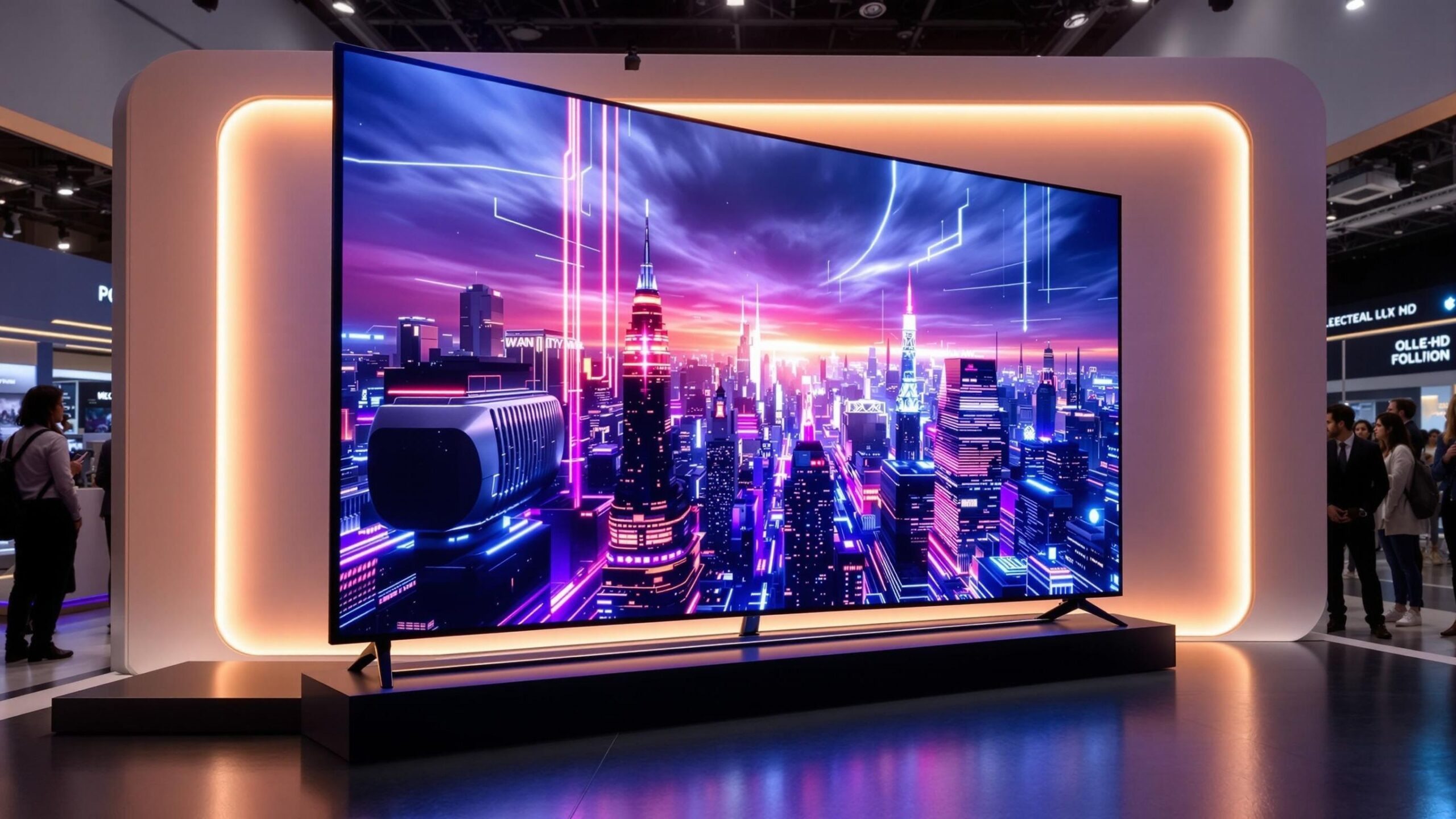OLED has quickly become the gold standard in television technology. Whether you’re shopping for your next big screen upgrade or simply curious about what makes these sleek displays so special, understanding OLED is the first step to appreciating the future of home entertainment. This simple guide will walk you through the essentials—what OLED is, how it works, and why it’s considered the hottest tech on the market for everything from binge-worthy TV nights to immersive gaming marathons.
Understanding OLED: More Than Just a Fancy Acronym
OLED stands for “Organic Light-Emitting Diode,” and while that may sound like something out of a science textbook, the idea is actually quite elegant. Unlike traditional TVs, which use a backlight to illuminate pixels, OLED TVs use organic compounds that light up on their own when electricity passes through them. This seemingly small difference is what makes OLED a revolutionary display technology. Each pixel in an OLED screen is self-emissive, meaning it produces its own light. This allows OLED panels to turn individual pixels completely off, resulting in perfect blacks and extraordinary contrast ratios. When you see a star-studded sky on an OLED display, the stars pop against an inky, truly black background—not the dark gray seen on most conventional TVs. This ability to control each pixel independently is the magic that gives OLED its brilliance.
The Evolution of Television Display Technology
To appreciate OLED, it helps to know where we’ve come from. Televisions have undergone an incredible transformation over the past few decades. The bulky cathode ray tube (CRT) televisions of the 20th century gave way to the flat-panel revolution, where plasma and LCD (liquid crystal display) reigned supreme. LCD technology advanced further with the introduction of LED (light-emitting diode) backlighting, making TVs thinner, brighter, and more energy-efficient.
But while LED and LCD screens brought improvements, they still depended on external light sources to illuminate the image, often resulting in lower contrast and limited black levels. Enter OLED, which changed everything by offering a display technology that didn’t need a backlight at all. Suddenly, the image wasn’t just lit—it was alive, with rich colors, deep shadows, and razor-sharp clarity.
Why OLED Is the Hottest TV Tech Right Now
OLED has captured the imagination of home theater enthusiasts, gamers, designers, and everyday viewers because it elevates the entire visual experience. The combination of vibrant color reproduction, infinite contrast, and lightning-fast response times makes OLED TVs a go-to for those seeking premium performance.
Color accuracy is another area where OLED shines. These TVs can display over a billion colors with incredible precision. The result is a visual experience that feels more lifelike and immersive than anything you’ve seen before. From the rich tones of a sunset to the shimmering hues in animated films, OLED delivers every shade with stunning realism.
Beyond picture quality, OLED TVs are also incredibly thin and stylish. Without the need for a bulky backlight, manufacturers can design ultra-slim screens that practically disappear when mounted on a wall. This minimalist aesthetic is perfect for modern homes, offering a premium look that matches the premium picture.
How OLED Technology Works at the Pixel Level
At the heart of every OLED TV is a panel made of organic molecules layered between conductors. When electricity flows through these layers, the molecules emit light—hence the term “light-emitting diode.” But unlike traditional LEDs, OLEDs can be manufactured to produce red, green, and blue light directly from each pixel.
This pixel-level control means that each point of light on the screen can be adjusted or turned off completely without affecting its neighbors. That’s why you see such stunning black levels—because there’s literally no light where the screen is black. This ability also eliminates the “halo effect” or light bleeding, which is common in LED displays when bright objects appear next to dark areas.
The result is precision. OLED TVs can render tiny details in shadowed areas, show subtle gradations in color, and respond instantaneously to changes in the image. Whether you’re watching a fast-paced sports game or playing an action-packed video game, the image stays crisp and clear.
OLED vs. LED and QLED: How Does It Stack Up?
When comparing OLED to other popular display types like LED and QLED, the differences are clear—but they’re also important to understand if you’re deciding which TV is right for you.
LED TVs use backlights to shine through liquid crystal layers to create images. While they’re bright and affordable, they lack the pixel-by-pixel control that gives OLED its depth. QLED, on the other hand, is a term coined by Samsung to describe its quantum-dot enhanced LED TVs. QLED TVs can produce vibrant colors and high brightness levels, making them great for well-lit rooms. However, they still rely on a backlight and therefore cannot match OLED’s ability to achieve perfect black levels.
OLED wins when it comes to contrast, viewing angles, and overall cinematic feel. Its ability to display deep blacks, along with high dynamic range (HDR), creates a more three-dimensional picture. QLED may have the edge in brightness, especially in bright rooms, but OLED delivers the most consistent and immersive experience when lighting is controlled.
Gaming and OLED: A Match Made for Action
For gamers, OLED is a dream come true. The ultra-fast response time and minimal input lag mean your actions register on screen almost instantaneously. Whether you’re navigating a fantasy world or engaging in high-speed races, everything looks and feels fluid.
Modern OLED TVs support variable refresh rates (VRR), NVIDIA G-Sync, AMD FreeSync, and HDMI 2.1—features that cater directly to next-gen console gamers and high-end PC setups. Combine this with the gorgeous visuals OLED provides, and you’ve got a display that’s not just for watching, but for playing at the highest level.
Some gamers have expressed concern about burn-in—where static images can leave a ghost image on the screen over time. While this was a more pressing issue in early OLED models, today’s TVs include advanced pixel-shifting technology and screen savers that drastically reduce the risk. As long as you vary your content and use built-in protection tools, the chances of burn-in are minimal.
OLED and HDR: A Perfect Partnership
High Dynamic Range, or HDR, is a key technology that enhances image quality by expanding the range between the darkest and brightest parts of the picture. OLED TVs, with their ability to produce true black and brilliant highlights, are a natural match for HDR content.
Dolby Vision and HDR10+ are two advanced HDR formats that benefit greatly from OLED’s capabilities. With scene-by-scene adjustments, these formats can deliver a more nuanced picture—deeper shadows, richer colors, and more lifelike highlights. Watching HDR content on an OLED screen is akin to looking through a window into another world, with every frame rich in texture and depth.
OLED TV Design: Beauty Beyond the Screen
OLED’s ultra-thin form factor is more than just a technological perk—it’s a design marvel. Without the need for a bulky backlight, OLED TVs can be made incredibly slim, often just a few millimeters thick. Some models are so thin they can be mounted flush against the wall like a piece of art.
Manufacturers like LG, Sony, and Panasonic have embraced this minimalism, producing televisions that double as decor. LG’s “Gallery Series” and Sony’s “Bravia XR OLED” not only provide cinematic visuals but also elevate the aesthetic of the room. In high-end setups, OLED TVs don’t just fit in—they transform the space.
There are even rollable OLED TVs that disappear into a sleek base when not in use. This innovation speaks to the future-forward nature of OLED: it’s not just about what’s on the screen—it’s about how the screen fits into your life.
The Future of OLED: What’s Next for This Breakthrough Tech?
OLED continues to evolve, with new advancements pushing the boundaries of what’s possible. One of the most exciting developments is the emergence of OLED evo panels, which offer even greater brightness and efficiency than previous generations. These newer panels maintain the exceptional contrast of traditional OLEDs while improving their visibility in brighter rooms.
We’re also seeing OLED move beyond TVs. Smartphones, tablets, laptops, and even automotive displays are adopting OLED technology for its flexibility, color accuracy, and energy efficiency. As manufacturing processes improve and costs go down, OLED is likely to become more accessible across a wider range of devices.
Looking ahead, technologies like MicroOLED and transparent OLED displays promise to blur the line between screen and environment even further. The future of OLED isn’t just in what you see—it’s in how you experience everything from storytelling to information.
Are There Any Downsides to OLED? A Balanced Perspective
While OLED is often hailed as the pinnacle of display technology, it’s important to consider a few limitations. The most talked-about concern is potential burn-in, particularly for users who leave static images like logos or game HUDs on screen for extended periods. But as mentioned earlier, modern OLED TVs come equipped with intelligent systems to minimize this risk.
Brightness can also be a consideration. While OLED excels in dark environments, it may not get as bright as the top-tier QLED or Mini LED TVs in very well-lit rooms. For most home environments, though, OLED provides more than enough luminance for a rich, detailed image.
Finally, there’s price. OLED TVs tend to cost more than LED or QLED models of the same size. However, the prices have been coming down steadily, and with mid-range and budget OLED models now available, the gap is closing. Many consumers find the premium well worth the upgrade once they see the difference for themselves.
Why OLED is Worth the Hype and the Investment
So, what is OLED? It’s the display technology that delivers stunning picture quality, rich contrast, and true cinematic immersion—all in a design that’s as beautiful as it is advanced. Whether you’re upgrading your home theater, diving into next-gen gaming, or simply looking for the best way to enjoy your favorite content, OLED TVs deliver an experience that’s unmatched.
With rapid improvements in panel design, pricing, and availability, OLED is no longer just for early adopters—it’s for anyone who wants to see their content in a whole new light. It’s sleek. It’s powerful. It’s revolutionary. And most importantly, it’s here to stay.
This simple guide only scratches the surface of what OLED technology has to offer, but it’s clear why this is the hottest tech in the TV world today. Ready to make the leap? Once you experience OLED, you won’t want to go back.
OLED TV Reviews
Explore Philo Street’s Top 10 Best OLED TV Reviews! Dive into our comprehensive analysis of the leading OLED TV products, complete with a detailed side-by-side comparison chart to help you choose the perfect protection for your devices.




